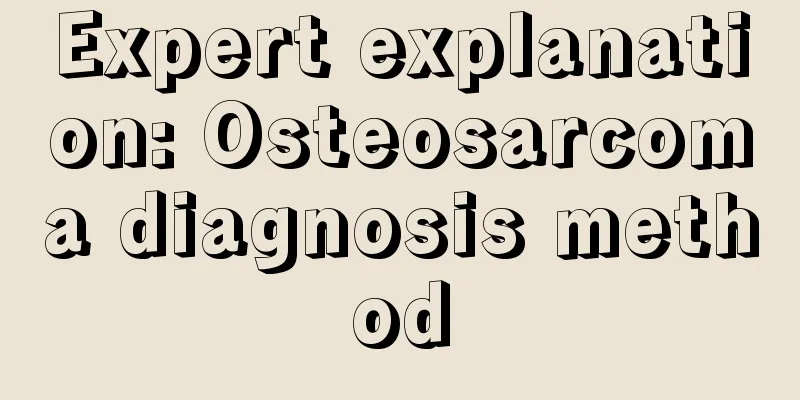Fibroids are closely related to genes and heredity

|
Does fibroid tumor have an important relationship with genes and heredity? In life, many diseases are hereditary, and hereditary diseases will bring lifelong troubles to children. Therefore, many parents are very worried about whether their children will inherit the disease when they suffer from the disease. So today we will take a look at the important relationship between fibroid tumor and genes and heredity: Fibromatosis is a genetic disease, which is a gene mutation on the 17th pair of chromosomes. It is dominantly inherited, which means there is a 50% chance of passing the abnormal gene to children, so not everyone in the family has it. Some neurofibromatosis patients have no family history, because only 50% of patients are inherited from their parents, and the other 50% are caused by spontaneous gene mutations. NFⅠ gene and pathogenic biological mechanism The NF1 type gene is located in the 17q11.2 region and consists of 60 exons and introns, encoding neurofibromin. The main functional region of neurofibromin (encoded by exons 20 to 27) has obvious sequence homology with the gene product of the catalytic region of mammalian guanosine triphosphate activated protein (GAP), and this region is called the NF1GAP-related region (GRD). GRD can activate Ras2GTPase in the body, converting the active guanosine triphosphate (GTP)-bound form of ras protein into an inactive guanosine diphosphate (GDP)-bound form, thereby inhibiting the AMP signal transduction pathway of the ras cycle, thereby inhibiting tumor cell growth. Therefore, GRD is a negative regulator of Ras signal transduction and is the key to the NF1 gene's inhibition of tumorigenesis. At the same time, Ras signal transduction may also inhibit tumorigenesis through the mTOR pathway (which participates in cell differentiation and proliferation and plays a key role in the pathogenesis of another neurocutaneous syndrome, tuberous sclerosis complex). Upstream of GRD, a cysteine/serine-rich region (CSRD) may be involved in the positive regulation of intracellular cyclic adenosine monophosphate (cAMP) levels and the regulation of cAMP-dependent protein kinase A (PKA) signaling pathways, thereby participating in the regulation of neuronal cell growth and differentiation. Its regulation and dysfunction may lead to learning, memory and intellectual development disorders. The spontaneous mutation rate of NFⅠ gene is high, and 50% of patients have new mutations. It is one of the gene sites with the highest mutation rate in human genes. However, no clear mutation hotspots have been found in the study, and there is no obvious connection between its genotype and phenotype. Mutations run through the entire NF1 gene sequence, including chromosome aberrations, base substitutions, insertion mutations, deletion mutations, duplication mutations, nonsense mutations, missense mutations, termination mutations, 3' untranslated region mutations, etc., and mutations are relatively concentrated in exons 21 to 27 and 11 to 17. In sporadic cases, 90% of new mutations occur on chromosomes of paternal origin, with base substitution mutations occurring in paternal cells and deletions occurring in maternal cells. NFⅡ gene and pathogenic biological mechanism The NFⅡ gene is located in the 22q12.2 region and contains a total of 17 exons, of which only the first 15 exons have pathogenic mutations, and exons 16 and 17 are optional splicing exons. The gene encoding product is called merlin, which consists of a FERM region, an α-helical region, and a C-terminus. There are two subtypes of merlin in the human body, type I and type II, but only merlin type I has tumor suppressor activity. After dephosphorylation of serine at position 518 of merlin, a closed active state is formed. Its upstream P21 activated kinase (PAK), cAMP-dependent protein kinase A, and myosin phosphatase 1 protein phosphatase 1δ jointly regulate the tumor suppressor activity of merlin by regulating the phosphorylation of merlin. Merlin is concentrated on the surface of cell membrane and cell scaffold, and may affect cell proliferation and differentiation by indirectly regulating cell membrane proteins [such as CD44, epidermal growth factor receptor (EGFR), etc.], cell adhesion factors (such as β-catenin, E-cadherin, etc.) and cytoskeleton (such as βⅡ membrane contractile protein, F-actin, etc.) or interacting with cytoplasmic proteins [such as phosphatidylinositol 3-kinase (PIKE-L), eukaryotic initiation factor 3 (eiF3c), etc.] to regulate various downstream mitogenic signaling pathways (such as PI3K, MAPK). NFⅡ mutations can be roughly divided into two categories: germ cell mutations and somatic mutations. Most typical NFⅡ patients are caused by germ cell NF2 gene mutations. Mutations include small fragment deletions or insertions, allele loss, nonsense mutations, missense mutations, frameshift mutations, splicing mutations, and mosaic mutations. Usually, missense mutations and large fragment deletions have mild clinical manifestations, while nonsense mutations or frameshift mutations have more severe clinical manifestations. At present, NF treatment is limited to tumor surgery and symptomatic treatment, but with the development of molecular biology, molecular genetics and other disciplines, the molecular pathogenesis and genetic research of NF will continue to deepen, thus providing greater help for genetic counseling, early prenatal diagnosis, and even clinical etiology treatment. |
<<: Experts introduce the diagnosis and differentiation of fibroids
>>: Uncovering the genetic secrets of fibroids
Recommend
What are the disadvantages of removable dentures
Dental problems are a common phenomenon in our li...
What is rotavirus diarrhea and what are its clinical manifestations
Rotavirus is very common in infants. After infect...
How to overcome psychological barriers
Psychological disorders are a type of psychologic...
Breast enhancement effect of rose essential oil
Having a plump figure is inseparable from a firm ...
What is Rubella Virus
Rubella virus is a very common acute infectious d...
What are the dangers of taking a bath with hot water?
In life, we always use some small items to meet o...
Will chronic pharyngitis cause bleeding
There are many patients with pharyngitis in our l...
How to choose the time to fumigate moxa?
Maybe most people are not very clear about what k...
Why can't people with purpura exercise
Purpura is a disease that many patients suffer fr...
Adult one minute pulse
The frequency of the pulse is closely related to ...
The difference between pulmonary nodule shadows and nodules
Pulmonary nodules are mainly caused by tuberculos...
What to do if your waist gets cold and you can't straighten it up
If you do not pay attention to the maintenance of...
Does baking soda have any side effects in treating underarm odor?
Underarm odor is a very distressing problem, whic...
What is a pituitary tumor? What are the symptoms of a pituitary tumor?
Pituitary tumors are a relatively common type of ...
Symptoms of chronic cholecystitis
There are many types of diseases, and we need goo...









